The Wool Journey Part 13 & 14: single versus plied yarn and the bulking of wool

The Wool Journey returns, as The Natural Fibre Company’s Sue Blacker explores the question of single versus plied yarn and an intriguingly named tool called the Bulkometer.
Single versus plied yarn
So at last our journey is getting to the finishing stages: we have a yarn! However, it is a single yarn: twisted in one direction only. Single yarns alone are prone to kink or to make a garment or sock spiral if over-twisted, but if they are not twisted enough they fall apart. So getting the correct twist is important for the end use as well as for the handle and balance of the yarn. The key is both to have sufficient twist to hold the yarn together for its designed purpose and to have no more than sufficient twist in order to maintain softness, bulk and memory characteristics of the wool.
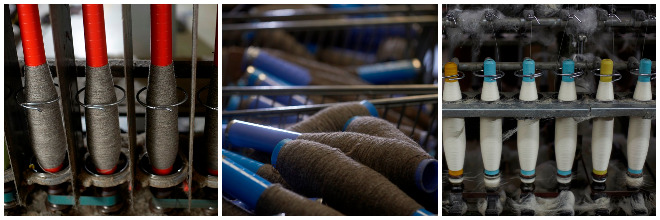
So a single yarn is usually our end product for weaving, sock and other knitting or traditionally for Shetland lace knitting. Some single yarns are also fat, soft, loose roving yarns, such as the Lopi yarns, although we are unable to make these on our equipment.
Below are some Lopi Yarns from Alafoss.
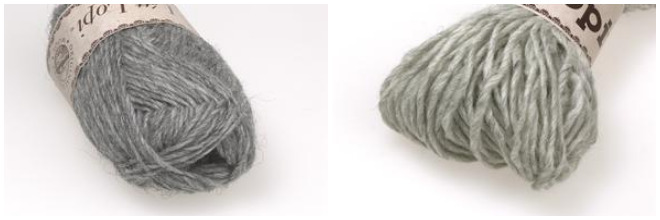
Single yarns are taken straight from the spinning frame tubes and wound onto paper or plastic cones (all re-usable) to go to their next process. The spinning oil remains in the yarn to help it through the further journey whether to a weaving loom or to a knitting machine. The knitting or weaving and finishing processes for the items or fabric will deal with the twist if the yarn is made correctly before finally washing out the oil.
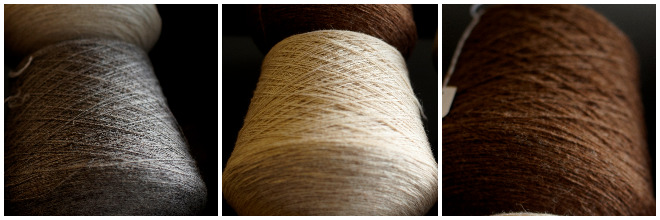
If a single yarn is to be dyed, this may be done under vacuum pressure on the cones or the yarn may be reeled off into skeins and dyed loose. So, to ensure the yarn does not kink and twist and tangle too much, it can be steamed to set it and reduce this propensity – even so the dye process can cause problems and it is much preferable to ply yarns if dyeing in hank format if possible.
Dyeing by definition weakens a yarn and if it has even slightly felted while hank dyeing and drying, or if the yarn is naturally hairy, then winding it back onto cones may cause breakages, requiring splicing and reducing the yield. A plied yarn is more balanced and stronger and therefore more effective for hank dyeing. However, cone dyeing under pressure will also weaken yarns, though of course they can be spun with additional twist to help compensate, since they will not need re-winding afterwards.
Generally, machine spun yarns are made with a Z twist and then the way in which they are fed into the loom or knitting machine will manage the natural spirality.
If a yarn is to become balanced, thicker or stronger, it can be plied, which is the classic process to create yarns for hand knitting and crochet. The process of plying is really just spinning several single yarns together. To do this, an S twist is used, which means that as the singles are plied they also slightly untwist and therefore lock together. A Z twist would result in an even more twisted and kinked yarn!
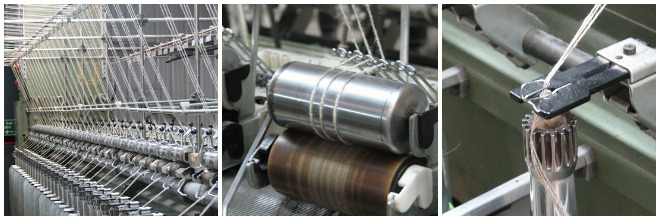
Getting a plied yarn to balance evenly means adjusting the plying machine for the thickness of the singles, for the woollen or worsted format and for the number of singles. For example, worsted spun yarns have a considerably higher twist in the single yarn, to hold together the aligned, smoothed fibres, so there must also be a higher twist in the plied yarn to balance it. This bit is somewhat easier by hand!
The characteristics of yarns with different plies do vary. A famous yarn is the 5-ply Guernsey yarn, and the multiple plies both create a very neat yarn with superb stitch definition and also a yarn which locks together well when knitted, to make a pretty wind-proof fabric. A 2-ply yarn is often beautifully springy and elastic, and we chose this format for our recent Tor birthday yarn, in an aran weight. Three-ply and 4-ply yarns are more even and balanced and work well for drape or garments.
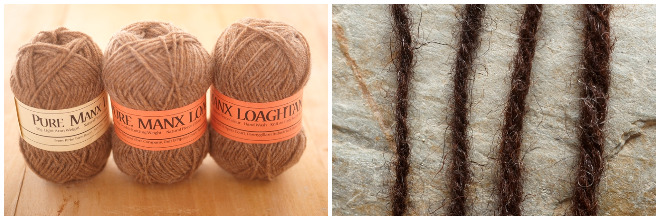
A yarn may be double plied, with two or three 2-ply yarns further plied together again, reversing the twist again, and this is called a crepe yarn and is particularly strong and even. While crepe yarns are very strong and have excellent stitch definition, they are relatively rare other than in fine fabrics, as of course the time taken to make them is considerably increased by the double plying.

Formerly, yarn specifications were defined by the number of plies of a pretty standard single yarn: 2-ply, 3-ply, 4-ply and then 8-ply, more commonly known as Double Knitting in the UK, but still called 8-ply in Australia and New Zealand. However, since spinning machines work at a constant speed, a thicker yarn is quicker to make, so instead of a 4-ply of 4 singles, the same final thickness can be achieved by 2-plying singles of twice the diameter.
Also, of course, individual yarn manufacturers want to make individual yarns, with individually designed patterns, and particular gauges or tensions, in order to create and maintain customer loyalty. So there is no standard really, and of course we should all always make a tension swatch to ensure we size our work correctly! Please see our downloadable information sheets on yarn specifications, lengths and weights. These are available on both the Blacker Yarns and The Natural Fibre Company advice and information pages of our websites.
The bulking of wool
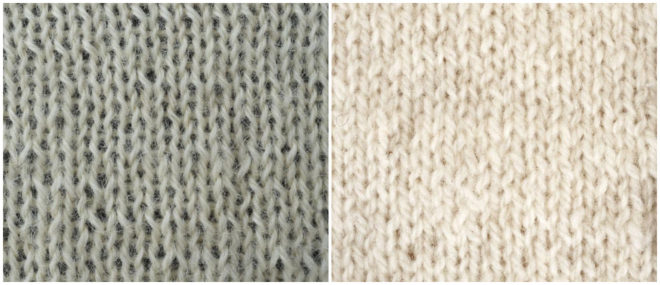
This photo illustrates the different fabrics obtained by knitting with Cotswold (on the left) and Shetland (on the right) – both as Double Knitting yarn. So both yarns will have close yardage for the same weight and both will work up to the same tension swatch size for stitches and rows. In this case both are also woollen spun – remember that worsted spun yarns work the same number of stitches but around 10% less rows in a tension swatch so you get less fabric, if more drape, for your yardage.
Now even if you look at the balls of wool you will see a considerable difference in appearance too.
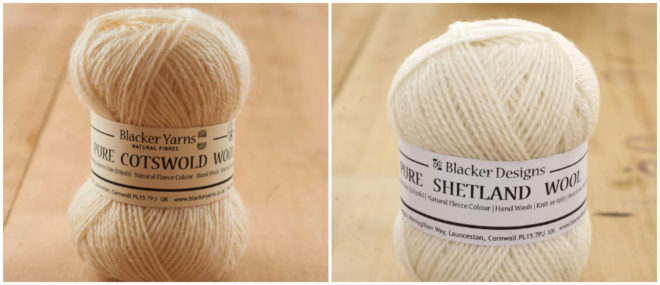
Both these sheep are hill sheep although the Cotswold has a balmier climate than the Shetland in its heritage.
This effect is due to a series of factors already described in earlier Wool Journey episodes, and these include fibre length, nature of crimp, degree of lustre, and more! However, a recent article in the Atelier Wools of Europe magazine No. 27 has caught my eye – about the different bulking factors of the fleeces from different breeds. Interestingly a completely separate piece of research done to create business plan I mentored, for making wool felt numnahs (the pad which goes under the saddle of a horse) found that Suffolk was considerably better than other breeds, no doubt for the same reason.
So the way the bulking factor is measured is by means of a Bulkometer, a device invented in New Zealand. Clean wool is put inside and then compressed ad release by a piston repeatedly for 30 seconds and the resulting volume is then measured. Being New Zealand the results related more to the local breeds. However the more familiar breeds are as follows:
- Down 30-34
- Cheviot 29-34
- Poll Dorset 27-34
- Merino 25-32
- Texel 24-28
- Corriedale 23-28
- Romney 21-25
- Border Leicester 17-21
- Lincoln 17-21
The numbers relate to the cubic centimetres per gram obtained from the compression exercise. For New Zealand, specialised in wools for carpets (as for the majority of the UK), the ability to recover bulk is obviously important as it will improve comfort. This also works of course for pillows, duvets and stuffed toys, and then will also contribute to the recovery of knitted garments in wear – and of course to numnahs. It does not necessarily imply hard wear or indeed any other qualities other than the ability to recover bulk.
So this is another interesting factor to consider when marketing yarns, but also when spinning and finishing them and of course in blending fibres to create a yarn with specific properties.
 About the author
About the author
As British wool spinners, The Natural Fibre Company add value by processing quantities of fleece from 20 kilograms up to over a tonne and more. As we scour, card, dye and woollen and worsted spin under one roof, we are effectively experts in all aspects of the process of turning raw fleece into high quality yarn. Most of our customers are in the UK for rare and specialist breeds.
The views expressed in our blog are those of the author and not necessarily lowimpact.org's




 The Wool Journey Part 10: using traditional carding machines
The Wool Journey Part 10: using traditional carding machines
 The Wool Journey Part 11: which yarn to make?
The Wool Journey Part 11: which yarn to make?
 The Wool Journey Part 12: spinning at last!
The Wool Journey Part 12: spinning at last!
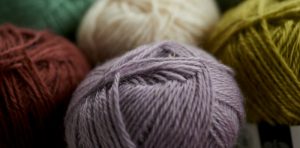 The Wool Journey Part 15: the final wool yarn package and packaging
The Wool Journey Part 15: the final wool yarn package and packaging
 The Wool Journey Part 16 and postscript: labelling yarn
The Wool Journey Part 16 and postscript: labelling yarn
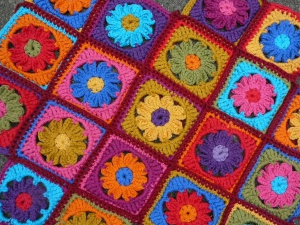 Knitting & crochet
Knitting & crochet
 Low-impact clothes
Low-impact clothes
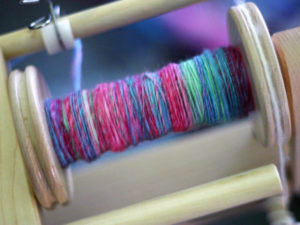 Spinning
Spinning


